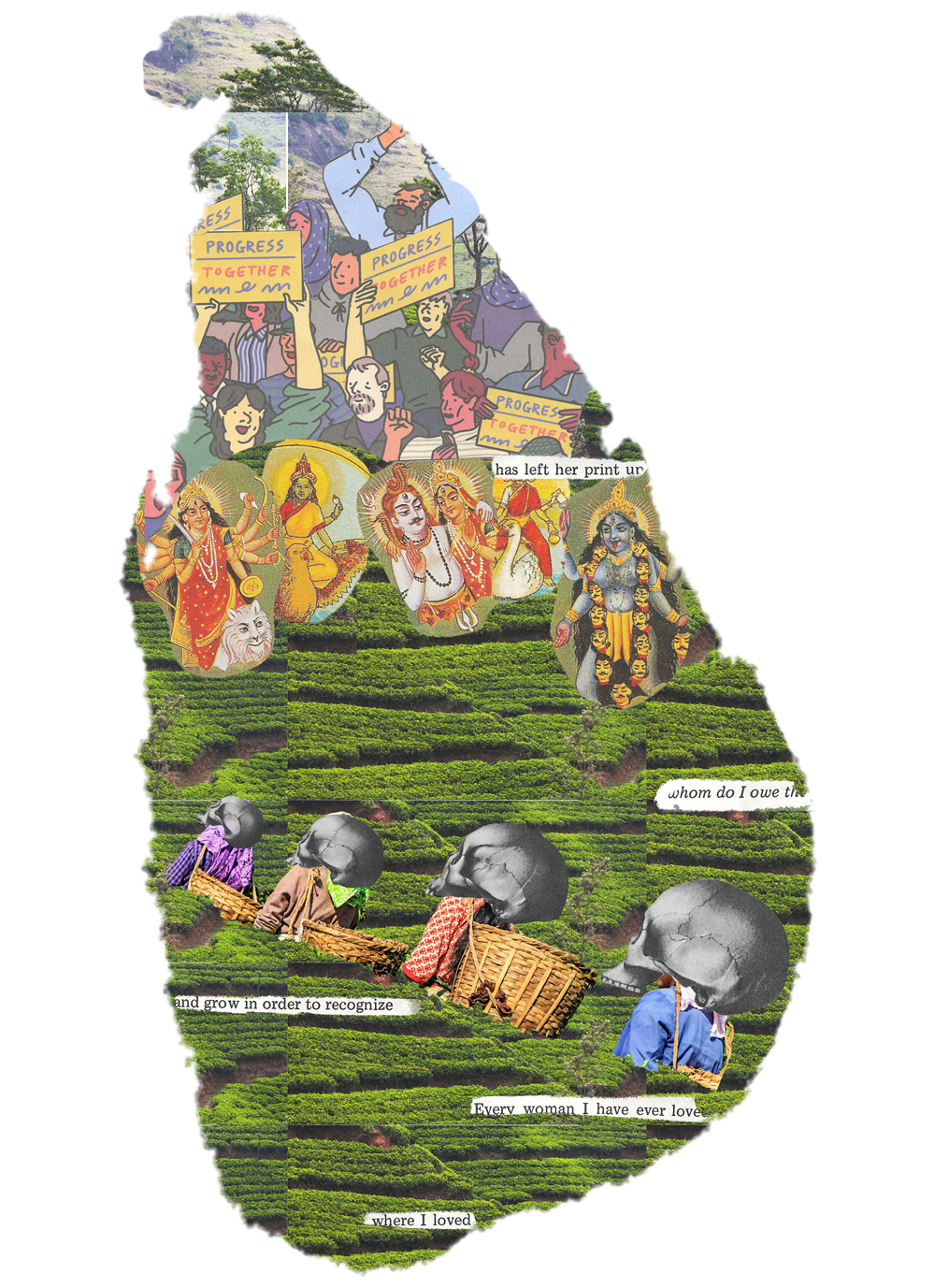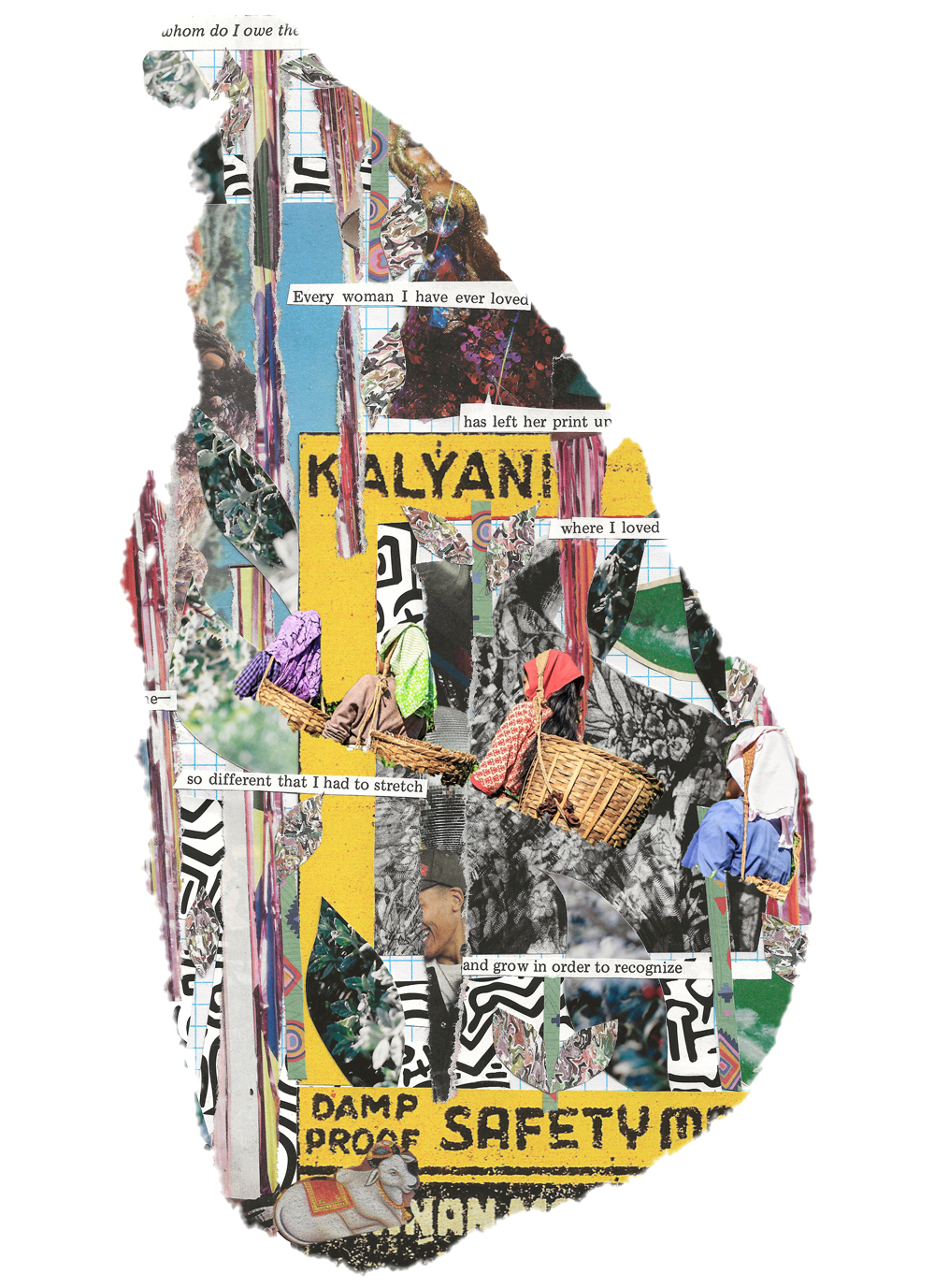



Gayathiri Kamalakanthan uses the innumerable and varied facets of her identity to create richly layered, complex collage work. As a Sri Lankan residing in England, they are deeply familiar with the past and present repercussions of colonization, displacement, and anti-Blackness. Further identifying as queer and non-binary has caused them to reckon with queerphobia in Tamil communities and elsewhere, which eventually inspired their use of collage as an “educational tool to uncover and dismantle oppressive frameworks including race-based “science,” racial capitalism, and the gender binary.”
The intertwining histories of these themes as seen in their relation to Sri Lanka are explored in Kamalakanthan’s diptych “Tamilscapes”. They begin with the premise that capitalism is built upon racism, as evidenced throughout the history of the British government’s exploitation of the tea leaf pickers in Sri Lanka, who even today earn £3.80 a day to pick 18 kilograms of tea, living well below the poverty line. They layer this premise with the history of scientific racism, exemplified in Samuel Morton’s “phrenology research” on human skulls, research that was discredited due to a thorough lack of scientific evidence but which, nonetheless, contributed to numerous racist theories culminating in eugenics. The additional history of Sri Lanka’s caste system in the Hindu and Tamil cultures, which is contemporarily exhibited by those in the West who protest against racism, but ignore its fundamental relationship to capitalism, is used in conjunction with Sri Lanka’s inherent pyramid shape to further reframe the complexity of Kamalakanthan’s native country.
When they began this diptych, they set out to answer the question “What is it to be really proud of my Tamil heritage, my dark Brown skin, to be really proud of being non binary?” The first panel of this piece entitled Whose Island could be considered an exploration of this question itself in its dissection of the intermingling histories of Sri Lanka. If so, then the second panel of the piece entitled Our Island, is Kamalakanthan’s answer; filled with the affirmations of Audre Lorde, experiences in self-love and self-discovery, and representations of their chosen family.